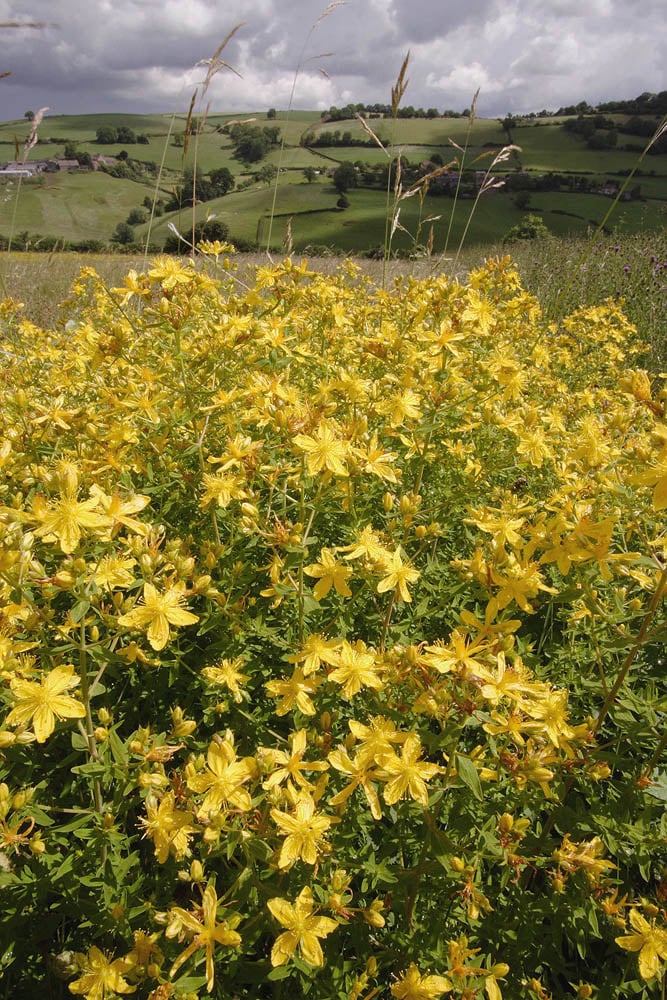Description
Two British species of Hypericum have hairs on both upper and lower sides of the leaf; Marsh St John’s-wort which has runners and is found in bogs, and Hairy St John’s-wort which has an erect stem and black dots along the margin of its sepals. Being a medium to tall grassland perennial with a rounded stem Hairy St John’s-wort can be mistaken for Perforate St John’s-wort but, as the name suggests, it is hairy and the oblong leaves are much longer. It flowers from July to August with seed shed from September onwards. The plant normally dies back in winter but may persist in particularly sheltered sites.
Habitat Information
Hairy St John’s-wort is a British native perennial of relatively unproductive grasslands on well-drained, neutral to basic soils. It is particularly characteristic of the transitional zone between shaded and unshaded habitat such as might be found in woodland rides and clearings, river banks, roadside banks and verges. Its ability to spread by vegetative means is limited and its very small seed requires open ground in which to germinate. This suggests that Hairy St John’s-wort requires occasional disturbance to its habitat if it is to persist.
Growing Information
In the wild seed probably germinates in the spring after inhibitors found in the seed coat have been washed out. For this reason it is probably best sown in the autumn.


